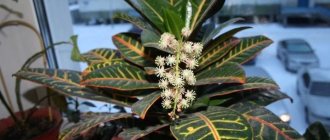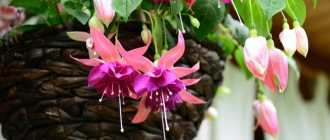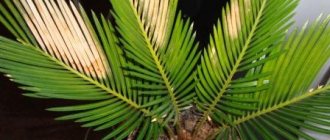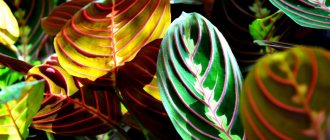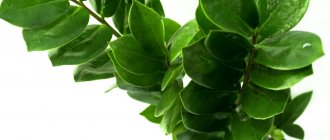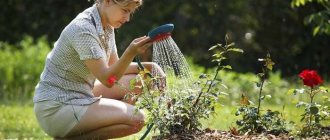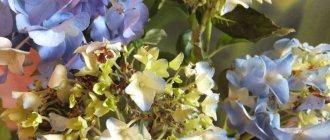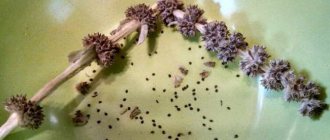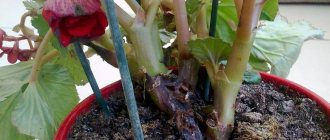Koleria is an unpretentious flower; even a beginner in floriculture can cope with its cultivation. Its leaves themselves are magnificent, but if you want to admire continuous flowering almost all year round, you will have to learn a few simple rules for caring for Koleria at home. Let's talk about them in order.
Lighting and location of the pot
Since in nature Koleria lives in the lower tiers of tropical rainforests, it is not adapted to bright sunlight. Therefore, it should be protected from direct sun. Lighting should be diffused. Windows facing east or west are best suited for the flower's residence. In this case, the leaves of the plant become bright, shiny and thick.
Advice! If you have not yet purchased a copy of this flower, check out the article Popular types and varieties of indoor Koleria (Kaleria). You might like one of them.
On northern windows, the flower will suffer from a lack of light, and on southern windowsills - from its excess. In the first case, additional lighting will be needed using a fluorescent lamp or a special phyto lamp, and in the second, the flower will have to be protected from the sun by blinds or a light curtain.
And one more thing - take the pot out of the room when you ventilate the room - Koleria does not tolerate drafts.
The best varieties of koleria with photos and names
Koleria variety Manchu Manchu
Koleriya Manchu photo
The poured leaves have a light green color. Orange-hued flowers are covered with burgundy specks along the edge.
Koleria variety Rongo Rongo
Koleriya Rongo Rongo photo
The leaves are light olive in color and covered with veins of a lighter shade. The flowers have a soft purple color, the inside is covered with burgundy speckles.
Koleriya variety Sunshine Sunshine
Koleriya variety Sunshine Sunshine photo
Compact variety with dark green leaves. The flowers are painted pink, a pair of petals on the limb have a darker shade, the entire limb is decorated with dark burgundy specks.
Kohleria variety Mother's Lipstick
Kohleria Mother's Lipstick photo
The interesting name of the variety “Mom’s lipstick” is quite justified: the flowers look very impressive. The play of rich pink and dark burgundy shades, interspersed with white spots really create the illusion of shine on the lips.
Hybrid coleria sciadotydaea hybrid
Coleria sciadotydaea hybrid photo
The hybrid form sciadotydaea hybrid has very large velvety flowers with pink and scarlet colors. An interesting dot pattern on the front side of the petals creates the illusion of expensive fabric against the background of a dark green canvas of equally luxurious leaves.
Temperature
Koleria thrives at moderate temperatures. In spring and summer, a suitable temperature will be between 22 and 26 degrees. Then the flower will actively develop and bloom profusely. At elevated temperatures, the following disaster can happen: new buds will begin to awaken on the stems, while the root system will not be able to provide the new shoots with everything necessary for growth and flowering. Under such conditions, new shoots will be weak and begin to die. We advise you not to allow the content temperature to exceed the recommended one.
If your flower goes into a dormant period after flowering, move it to a cooler, dark room with a living temperature of 15 - 17 degrees. If the flower does not have a pronounced dormant period, leave it in its original place.
Watering and humidity
Kohleria should be watered according to its moisture needs. In spring and summer, watering should be more frequent and abundant. It is especially important to regularly water the flower during the formation of buds. Lack of moisture can cause the plant to drop its ovary and refuse to bloom. Make sure that the soil does not dry out at all.
Bottom watering, in a tray, is welcome, as this will prevent moisture from getting on the pubescent leaves of the plant. Drops of water can ruin the appearance of the leaves (dark spots will appear on them), and can also cause them to rot.
In winter, water the flower (if it does not sleep) less often, only after the top of the soil in the pot has not dried out.
Use only settled water at room temperature for irrigation.
A flower whose homeland is the tropics, of course, needs high humidity in the surrounding air. Therefore, if the humidity in your apartment is below the recommended level, spray the air around the pot with a fine spray bottle. There is no need to spray the flower so that water does not get on the pubescent leaves of the flower. If your flower does not sleep in winter, then during the heating season, its pot should be placed in a tray with wet gravel or expanded clay. But not in water, otherwise the root system may rot. To increase humidity, you can periodically dry wet towels on the radiator, you can place a wide container of water next to the flower for evaporation, you can use a household humidifier if you have one.
The soil
The soil for Koleria must have a high degree of looseness, good aeration and moisture permeability, and also have low acidity. You can’t find ready-made soils for Koleria in the store, but soils for growing Saintpaulia (Violets) or Gloxinia are suitable. It is not difficult to prepare such soil yourself. Take 2 teaspoons of leaf soil and 1 teaspoon each of turf soil, peat and coarse river sand. Instead of sand, you can add vermiculite. Add pieces of charcoal here to prevent root rot and other infections, as well as to retain excess moisture.
This may be interesting: Diseases and pests of Impatiens
In addition to the soil, you need to take care of good drainage. Prepare expanded clay, pebbles or small stones for this purpose (scald with boiling water).
Landing
Kaleria in the wild grows on rocky, poor soils, so it is not very demanding on the soil. Replant it if the rhizome has already completely filled the pot. The best time for transplantation (more precisely, for transshipment) is spring. For the plant you should take a shallow and wide container.
Kaleria is transplanted using the transshipment method
Earth mixture: 2 parts leaf soil, 1 part peat, 1 part sand, 0.5 parts humus, a little charcoal (to absorb excess moisture). You can also purchase ready-made soil for Saintpaulias or gloxinias. At the bottom of the pot you must place a 2-centimeter layer of drainage - pebbles, expanded clay, brick.
There is no need to clean the root from the soil; you can immediately place it in a new container by transferring it and sprinkle it with fresh substrate.
Video: planting Kaleria
Transplanting and choosing a pot
The flower grows quickly, its root system develops well, so it needs an annual transplant into a larger pot. The flower is replanted in early spring, when it is still in the dormant stage. It is impossible to replant Koleria during its active growth, at the stage of bud formation and, especially, flowering. The flower will shed its entire ovary, and you will be left without gorgeous blooms for a long time. To replant, use the transfer method; do not shake off the soil from the roots of the plant.
The new pot should be wide and not deep, slightly larger in size than the previous one - focus on the size of the root system of the flower. Fill all the voids in the new pot with fresh substrate carefully, without compacting the soil, just shaking the pot slightly. Try not to get the leaves dirty - they are pubescent, and it will not be easy to shake off the soil from them.
The pot can be used either plastic or ceramic. But a ceramic pot is preferable, since it retains moisture longer; in the summer, the root system does not suffer from the heat, and in the winter, from a cold window sill. In addition, a ceramic pot is more stable, and an overgrown bush will not tip it over on its side.
Note the drainage holes at the bottom of the pot. If they are missing, you will have to drill them yourself or pierce them with a hot awl (nail).
Brief description of cultivation
- Bloom . In July–November.
- Illumination . Requires bright sunlight, which should be diffused.
- Temperature regime . In summer and spring it is from 22 to 26 degrees, and in winter - from 16 to 18 degrees.
- Watering . In spring and summer, you need to water abundantly and often; in the autumn, a gradual reduction in watering is carried out. In winter, watering should be scanty and infrequent, and the clod of earth should not be allowed to dry out completely.
- Air humidity . Common for rooms in a residential area. On hot days, the container with the bush must be placed on a tray filled with moistened expanded clay.
- Fertilizer . The flower must be fed in April–October once every 7 days; for this purpose, fertilizer for flowering plants is used.
- Rest period . In November–March.
- Transplant . If necessary, at the beginning of intensive growth.
- Suitable soil mixture . Its composition should include leaf and turf soil, sand and humus (4: 2: 1: 1).
- Reproduction . By seed and cuttings.
- Harmful insects . Scale insects, spider mites, whiteflies, thrips and mealybugs.
- Disease . If the bush is not properly cared for or placed in unsuitable conditions, it may develop problems with foliage or flowering.
Unpretentious indoor flowers Koleria
Feeding and fertilizer
Koleriya needs systematic feeding, especially during the period of bud formation and flowering. Fertilizing should be carried out at least twice a month, starting from April (the time of active growth of the bush), until autumn. During the dormant period, plants are not fed. Use liquid complex fertilizers for decorative flowering indoor plants, which contain nitrogen and potassium in approximately equal proportions, and the dose of phosphorus is significantly increased, for example, according to the formula NPK = 20-20-50. Ready-made preparations are suitable for feeding Saintpaulia and Orchids.
Pruning and crown formation
Koleria is a hanging plant by its nature. But you can form it into a bush shape. But, regardless of your choice, pruning the bush is an important event that contributes to the rejuvenation of the flower and helps maintain its appearance in a given shape. Plan this event for the spring. Later pruning will delay the beginning of flowering. Remove all diseased, dried and damaged stems with a clean, preferably sterile, instrument.
Now let's talk about the formation of the Koleria crown. If you want to give the bush an upright shape, shorten by a third all shoots that have reached a height of 20 - 30 cm. To provoke the plant to form new side branches, and, therefore, to form more buds, remove their tops from the shoots.
If you do not prune Koleria in a timely manner, its shoots will stretch out, the flower will lose its attractiveness, fewer flower stalks will form on it, and flowering will be more sparse.
Species diversity
Today there are more than 40 types of kohleria, but not all varieties are suitable for growing in an apartment. The most common types of kohleria that are used for home breeding are:
Koleria fluffy-flowered
It has rich green leaves with red edges. The flowers are orange or bright red, inclined downwards. At the end of the buds, yellow petals with contrasting splashes are curved upward and covered with fine hair. The length of the flowers is 5 cm, and the plant itself grows up to 50 cm.
The color is nice
The leaves of the plant are dark green, pubescent with dense silver hairs. The shoots reach a length of 40 cm. The buds of this variety are colored in shades from light pink to rich crimson.
Kohleria Lindeniana (lat. name Kohleria lindeniana)
A miniature plant up to 20-30 cm high with oval three-centimeter leaves. The leaves of this variety are distinguished by a pronounced vein pattern. The upper part of the leaves is dark green with white fibers, and the lower part is slightly lighter, with a pinkish tint. The light purple flowers of this variety reach 6 cm.
Koleria Bogota
Some experts distinguish it as an independent species, others classify it as a subspecies of the pleasant variety. Its distinctive feature is its yellow-red buds, decorated with purple patches on the inside of the petals. The length of the leaves is approximately 10 cm, and the height of the plant itself is 60 cm.
Koleriya Varshevich
It differs from other varieties in its large lilac buds and dense dark green leaves.
Koloskovaya
One of the shortest plants of all varieties of koleria, reaching 30 cm in height. It features a large number of red-orange flowers and dark green leaves with white stripes.
Tubiflora
It differs from other varieties in the tubular shape of its red buds. Coleria Volosistaya is similar to this species, with a difference in the shade of the leaves - they are dark green with a purple tint.
Winter pruning and dormant care
In autumn, when Koleria's flowering ends, its greenery begins to fade. The leaves lose turgor and begin to dry out. At this time, you should cut off all wilted parts of the plant, right down to the rhizome, leaving only a small part of the stem on the bush. Move the pot with the rhizome to a cooler room (15 degrees) with moderate lighting throughout the winter. Don't feed. Do not spray the surrounding air. Reduce watering to two or less times a week, although do not allow the root system to dry out completely - the flower will die. In this state, Koleriya should last until January.
Some varieties of Koleria do not have a dormant period and require some care in winter. After they bloom, they keep all the leaves on the shoots green. Then leave them, they live on the windowsill all winter. For such flowers, there is no need to reduce the temperature and lighting, just water more moderately and do not feed.
This may be interesting: Ruellia - home care
Description of the Kaleria flower
About 65 species of this plant are known, which can be seen in nature in the tropical regions of Central America. Its distinctive feature is the pubescent leaves located opposite each other with a variety of colors, from bright green to bronze. But the main reason why the Kaleria flower, such as in the photo, has become popular among indoor plants is its original flowers. The plant forms them from spring to autumn with minor interruptions.
The flowers resemble modified bells that have an elongated corolla. Their color can vary: from pink to dark brown, interspersed with a different shade. Most often, hybrids that have a long flowering period are grown at home.
Methods of propagation of Koleria
Koleria reproduces in several ways: by dividing the rhizome, cuttings and seeds.
By dividing the rhizome
This method of propagation is used in early spring during the next flower transplant. Koleria has a creeping tuberous rhizome (rhizome), from which new shoots and roots are formed. Remove the flower from the pot, free the rhizome from the substrate and inspect it. If the plant is mature, then its rhizome can be divided into several parts. It is important that each part has its own pair of healthy shoots and a sufficient number of healthy roots. The difference between rhizomes and roots is that they have buds, nodes and scaly leaves.
And so, you divided the rhizome into parts. Sprinkle the cut areas with charcoal or activated carbon and allow time to air dry. Then plant each part of the rhizome in an individual pot of a suitable size, not deep, a few cm. Water. Soon the shoots will begin to grow. If you follow the rules of care, you will see young bushes blooming in the first year.
Interestingly, Koleria also has aerial rhizomes (thickened stems in which starch reserves accumulate).
Propagation by cuttings
Cuttings are the easiest and most popular way to propagate Koleria. To get a new healthy plant, cut off a well-formed apical cutting. Remove all leaves from the bottom of it. To enhance root formation, treat the cut with any growth stimulant (root, epin, zircon). Place the cutting to a depth of 2 cm in a container with a damp mixture of peat and sand. Within ten to a maximum of fourteen days, the plant will acquire its first roots, and after a month it will have formed a full-fledged root system.
Koleria has increased root formation. For rooting, you can simply place the prepared cuttings in water, wait for their roots to appear, and transplant them into independent pots.
Leaf propagation
Sometimes you meet the flower of your dreams at a party or in a public place where it is impossible to cut off its top and take it home for rooting. But it is quite possible to pick a leaf quietly or ask the hostess for it. So, Koleria reproduces quite well with the help of its leaf. A leaf, like a cutting, can be rooted in two ways:
- Place in water to a depth of 1 - 2 cm. Make sure that the water is always at this level, warm and settled. You can add some kind of root formation stimulator (Kornevin, Epin).
- Place the leaf for rooting in a greenhouse with a moist substrate of sand and peat. Rooting a leaf takes much longer than a cutting. The roots take several months to form. Transplant well-formed seedlings into a small pot with nutritious soil.
Growing Koleria from seeds
Obtaining Koleria from seeds is the most difficult and unpredictable method of propagation, since such plants, when growing, rarely retain their varietal characteristics. If you choose this method, we recommend purchasing seeds in specialized stores.
Choose the time to sow Koleria seeds from the end of January to the beginning of March. Prepare a greenhouse for sowing, for example, a container with a lid or a deep box with glass. Place the seeds on the surface of a moist substrate consisting of equal amounts of peat and sand, at some distance from each other. Close the container lid. Place the seedlings in a warm (about 23 - 25 degrees), bright place for germination. If necessary, ventilate the greenhouse and moisten the substrate.
The seeds will germinate in 2 – 3 weeks. Wait until the seedlings get stronger, when they have two to four true leaves, and then transplant each sprout into a separate pot with a diameter of 7 cm. Before the bush forms, pinch the tops of the seedlings to stimulate them to form side shoots.
Appearance of the colony
Koleria leaves reach fifteen centimeters, up to eight centimeters wide. Outwardly, they look like oblong eggs. The edges of the leaves are crenate and have a fleecy surface.
The color of the leaves is varied: from juicy dark green flowers to snow-white with pink bristles. Some hybrids have acquired silver and bronze leaves.
There are quite a lot of single flowers on the plant. Some varieties of koleria contain two or three flowers on a peduncle.
In appearance, Koleria flowers are similar to thimbles: wreaths with a small tube reaching five centimeters, narrow at the throat and swollen at the base. The color of the flowers is also varied: dark red with an orange throat, spotted corollas, etc.
Colerias are ideal for interior decoration; they take root most successfully in warm rooms. Florists have obtained a large number of Kohleria hybrids through crossing with other plant species.
Thanks to this, the plants acquire unusual colors. Both standard forms of plants and miniature ones are distinguished, which will give an unusual look to the room. Photos of the collection confirm this.
Diseases
Koleria is a fairly resistant flower to infectious diseases. Only in conditions of high humidity and low air temperature is infection with powdery mildew, root rot and oidium possible. But, more often, in case of gross violations of the rules for caring for Koleria, non-infectious diseases arise.
We will try to tell you about the most common problems that arise when growing this exotic at home and how to eliminate them.
| Problem | Cause | What to do |
| The leaves are covered with white spots, the shoots are covered with a white coating. | The flower became infected with powdery mildew. | It is better to cut off the ground part of the flower and treat the rhizome with a fungicide containing copper preparations to treat powdery mildew in indoor flowers. |
| The leaves were covered with a gray coating. | The plant became infected with oidium. | Treat the leaves with soapy water. Reduce air and soil humidity. |
| The leaves are withering. | Excessive watering, stagnation of water in the pan, too dense soil. The roots of the plant began to rot. The bush became sick with root rot. | Transplant the plant into a new substrate, first removing areas with damaged roots and treating the cuts with crushed activated carbon |
| Kohleria does not bloom. |
|
|
| Dark spots on leaves. |
|
|
| Yellowing and excessive elongation of shoots. | Lack of ultraviolet radiation | Move the pot to a brighter place. |
| The shoots are bare, flower buds are not formed. | Lack of lighting. | The flower should be moved to a more illuminated place, the tops should be pinched so that side shoots and new flower ovaries are formed. |
| The flower slowed down, the buds and flowers began to fall off. | Soil poor in nutrients. | Feed the plant. Start feeding him every week until you see progress. |
| Curling of leaves. | The indoor air is too dry. Kohleria suffers from lack of moisture. | Increase the humidity in the room with the flower by any means: place containers of water next to the pot, spray the surrounding air with a fine spray bottle, and during the heating season, hang the radiators with wet towels. Adjust the watering mode. |
| Koleria leaves turn yellow. |
|
|
| The plant systematically sheds its buds. | The soil is oversaturated with calcium. | Replace the soil in the pot with a new substrate suitable for this flower. |
| Thermal burns of leaves. | Irradiation of plant leaves with direct sunlight through glass. | Move the flower to another place or cover the window with light curtains or blinds. Remove damaged leaves. |
Pests
If you follow the rules for maintaining a flower, pests attack it quite rarely. In addition, the entire plant is covered with villi, which prevent parasites from penetrating the juicy pulp of the plant. However, sometimes this happens and spider mites, aphids or mealybugs still spoil Koleria’s life. These parasites suck out all the juice from the succulent leaves of the plant, which leads to wilting of the leaves, deformation of the buds and a complete stop in the development of the flower.
At the first sign of insects, treat the flower with soapy water in the bathroom or at least with warm water from the shower. You will wash away most of the pests, but in order to get rid of all the adults and their larvae once and for all, you will have to treat the plant with some insecticide, such as actellik, actara, fitoverm, karbofos and many others according to the instructions for the drug. One treatment may not be enough, repeat the procedure after a week (read the instructions carefully).
What problems arise during cultivation?
If you do not care for the colony well, the following difficulties may arise:
- the appearance of brown spots on the leaves, which are treated with warm watering;
- the pallor of the leaves indicates an excess of light or fertilizing;
- a gray coating may appear due to a fungal disease, which in turn arose due to high air humidity or water getting on the leaves;
- curling leaves indicates a lack of moisture and too infrequent watering;
- lack of flowering may be due to any violation of maintenance conditions.
The presence of a large number of villi on the surface of the leaves prevents the appearance of pests, however, sometimes you can see spider mites and aphids. Mealybugs can also be found. To prevent the disease, you will need to create the necessary conditions for growing and treat the plant with a suitable treatment agent.

